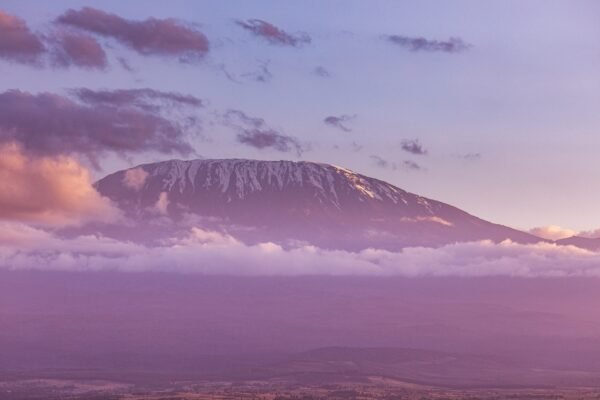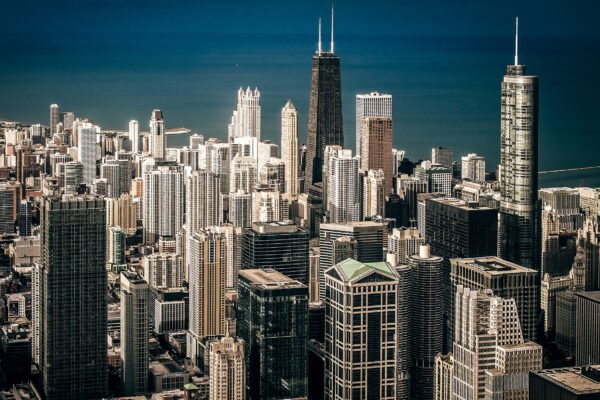The Origin of Mount Kilimanjaro’s Name

Earlier this month, we looked at several interesting facts about Mount Kilimanjaro. This endlessly fascinating mountain not only looks great in pictures (and even more so in real life!), but it has one of the most memorable and unique names of any mountain in the world.
The name “Kilimanjaro” immediately captures the imagination. Its rhythmic sound and strong association with Africa’s majestic landscapes naturally make people curious about its roots.
So, why is this iconic peak named Kilimanjaro? The origins of the name are surprisingly mysterious and debated. This enduring appeal invites a deeper exploration into the stories and languages that shaped the name we know today. Let’s take a look at the history and continued appeal of both the name and the incredible mountain.
Exploring the Origin and History of the Name “Kilimanjaro”
The etymology of “Kilimanjaro” is famously disputed. Linguists and historians generally agree that the name is not derived from a single word but is a blend of terms from local African languages, primarily Swahili and Chagga.
The most widely accepted theory breaks the name into two parts. “Kilima” is a Swahili word meaning “mountain” or, more accurately, “hill.” Swahili is a Bantu language widely spoken along East Africa’s coast. The second part, “njaro,” is thought to come from the Chagga language, spoken by the indigenous people living around the mountain’s base. In Chagga, “njaro” may mean “whiteness” or “shining,” a clear reference to the mountain’s brilliant, snow-capped summit.
However, this theory has complexities. Etymologists point out a common misconception: “kilima” technically denotes a smaller hill. The proper Swahili word for a large mountain is “mlima.” This discrepancy suggests the name might have resulted from a misunderstanding by early European explorers when they first recorded it.
Alternative theories offer fascinating insights into local perspectives. Some interpretations suggest the name derives from the Chagga phrase “kilemanjaare,” which translates to “that which defeats” or “that which is impossible.” This reflects the local view of the mountain as an unclimbable, challenging force. In other Chagga theories, “njaro” has been linked to words for “bird,” “caravan,” or even a protective demon.
The name “Kilimanjaro” entered the global vocabulary through European exploration. It first appeared in written records in the mid 19th century. In 1848, German missionary Johannes Rebmann reported sighting the snow-covered peak. Later, in 1860, fellow explorer Johann Ludwig Krapf described it as the “mountain of greatness” or “mountain of caravans.”
The name continued to evolve under colonial influences. Maps from German East Africa in the 1880s, for example, often labeled the peak “Kilima-Ndscharo.” These variations are generally attributed to the different linguistic interpretations made by various sources over time.
These layered origins, blending indigenous languages with European documentation, have shaped the name’s unique global identity. This complex history leads us to how the mountain is known by other names, both locally and globally.
Nicknames & Alternative Names
Beyond its official name, the mountain has earned several others. The most common nickname is the “Roof of Africa.” This title is straightforward, recognizing Mount Kilimanjaro’s status as the continent’s highest point and its immense geographical dominance.
Interestingly, the Chagga people traditionally did not have a single, unified name for the entire mountain complex. Instead, they named its distinct peaks. The main summit, the one with the snow, they call “Kibo,” which means “spotted” in reference to the rock appearing through the snow. The jagged eastern peak is known as “Mawenzi,” meaning “broken top” or “notched,” describing its rugged form. These names refer specifically to the volcanic cones and differ significantly from the overarching name adopted by Europeans.
Other local cultures also have their own monikers. The Maasai people, for instance, sometimes refer to the mountain as “Ngaje Ngai,” or the “House of God.” These indigenous and descriptive names persist today, often used alongside “Kilimanjaro” in tourism and conservation contexts.
This variety highlights the ongoing discussions among linguists about the name’s true roots. It also encourages us to appreciate the multicultural layers that make up the mountain’s identity in the modern world.
Kilimanjaro in Popular Culture
Today, the name Kilimanjaro resonates globally, symbolizing high adventure and profound natural wonder. It represents a major goal for climbers and travelers worldwide, with thousands attempting the ascent every year.
The mountain also holds a significant place in popular culture. Its most iconic mention is arguably in Ernest Hemingway’s 1936 short story, “The Snows of Kilimanjaro.” In this work, the snow-covered peak represents unattainable beauty, purity, and mortality. This powerful portrayal has inspired numerous films and other works of literature, often using the mountain as a metaphor for life’s ultimate challenges and peaks.
Musical references have also cemented its image. The 1982 song “Africa” by the band Toto famously includes the lyric, “Kilimanjaro rises like Olympus above the Serengeti.” This line perfectly captures its status in the global imagination as a towering, almost mythical landmark.
Further Readings & Resources
The following resources and links are accurate as of the publication date of this article.
- Ultimate Kilimanjaro guide on the name’s meaning: https://www.ultimatekilimanjaro.com/kilimanjaro-meaning/
- Climbing Kilimanjaro guide to the name’s origins: https://www.climbing-kilimanjaro.com/kilimanjaro-meaning/
You may also like

Fascinating Facts About Mount Kilimanjaro

The Story of Chicago’s Nicknames

Leave a Reply